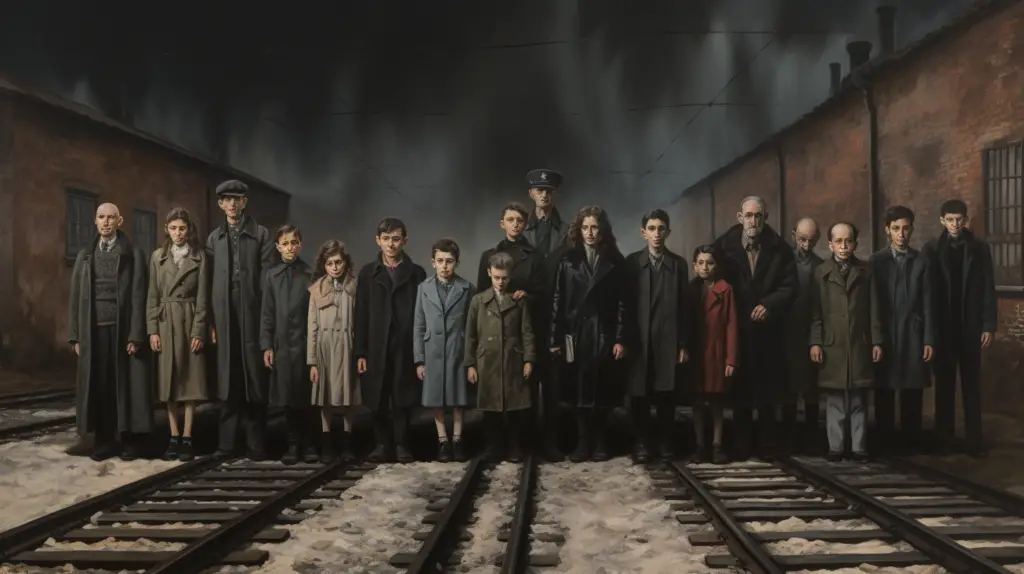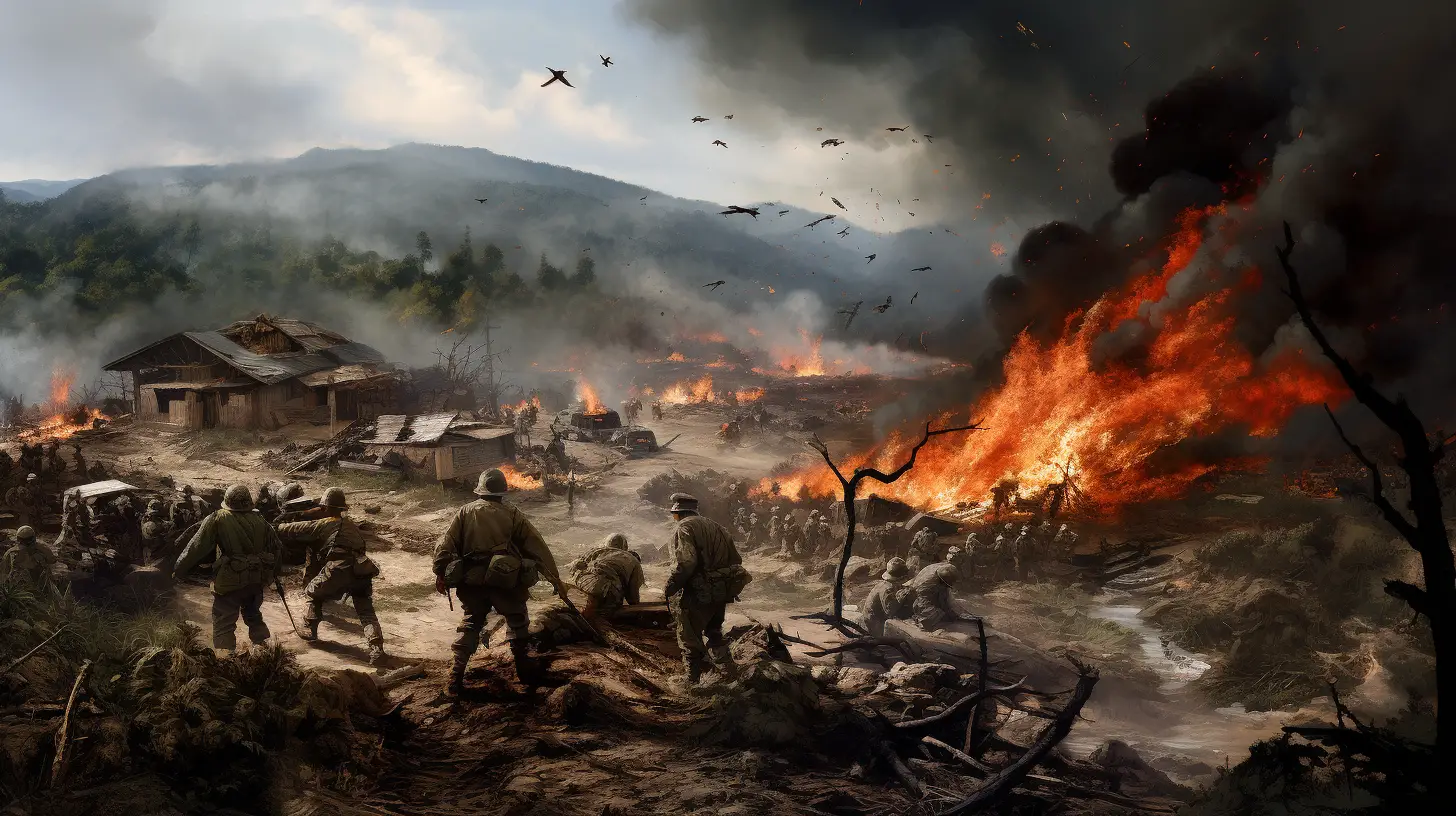The Holocaust, one of the darkest and most devastating chapters of human history, was an atrocity that transcended borders and challenged our very understanding of humanity. From 1941 to 1945, six million Jews – including 1.5 million children – were systematically murdered in a state-sponsored genocide by Nazi Germany under Adolf Hitler’s regime. This horrific period not only affected the Jewish community, but also profoundly reshaped the world’s political, social, and moral landscape.
This article provides 25 significant facts about the Holocaust, its causes, and its aftermath, aiming to foster a deeper understanding of this tragic period and to ensure that its painful lessons are never forgotten.
1. Anti-Semitism in Europe: Anti-Semitism, or prejudice against Jews, existed long before the Holocaust. It reached its peak during the Middle Ages but remained pervasive in Europe, setting the stage for the more extreme and violent forms that led to the Holocaust.
2. Adolf Hitler’s Influence: Hitler, who became Chancellor of Germany in 1933, escalated anti-Semitic propaganda, policies, and actions, culminating in the systematic extermination of Jews during the Holocaust.
3. Nuremberg Laws: In 1935, Hitler introduced the Nuremberg Laws that stripped Jews of their rights as citizens and set the legal framework for the Holocaust.
4. Kristallnacht: Also known as the Night of Broken Glass, this event in November 1938 saw widespread coordinated attacks on Jews throughout Nazi Germany. It marked a significant escalation in the Nazi’s persecution of Jews.
5. Concentration and Extermination Camps: The Nazis built concentration and extermination camps throughout Europe to imprison and murder Jews, with Auschwitz, Treblinka, and Sobibor among the most notorious.
6. The Final Solution: This was the term used by the Nazis to describe their plan to annihilate the Jewish people. It was formalized at the Wannsee Conference in January 1942.
7. Holocaust by Bullets: Aside from extermination camps, mass shootings conducted by Einsatzgruppen (mobile killing units) were responsible for the death of over a million Jews.
8. Six Million Jews: Approximately six million Jews were murdered during the Holocaust, representing two-thirds of the Jewish population in Europe.
9. Non-Jewish Victims: Besides Jews, other groups targeted by the Nazis included Romani people, the disabled, Slavs, political dissenters, homosexuals, Jehovah’s Witnesses, and others, bringing the total death toll to approximately 11 million.
10. Resisters and Rescuers: Many people, including non-Jews, risked their lives to help Jews escape the Nazis. This was seen in acts of resistance, sheltering, or aiding Jews in other ways.
READ MORE: 25 Interesting Facts and Controversies About The Korean War
11. The Role of Other Nations: Countries worldwide reacted differently to the Holocaust, with some denying entry to Jewish refugees, some remaining neutral, and others actively participating in rescue efforts.
12. The Evian Conference: Held in 1938, this conference showcased the world’s reluctance to accept Jewish refugees, leaving many of them with nowhere to escape.
13. World War II: The Holocaust took place during World War II, and it was not until the war ended that the full extent of the horrors was revealed.
14. The Liberation of the Camps: Allied forces liberated the concentration camps in 1945, discovering shocking evidence of the genocide.
15. Displaced Persons: The end of the war saw millions of survivors displaced, leading to a major refugee crisis.
16. The Nuremberg Trials: After the war, leading Nazi officers and collaborators were put on trial in Nuremberg. These trials were significant in establishing the concept of “crimes against humanity.”
17. Creation of Israel: In the wake of the Holocaust, global support for the establishment of a Jewish state increased. In 1948, the State of Israel was officially declared.
18. Displaced Persons and the Right of Return: Following the creation of Israel, the Right of Return law was enacted in 1950, allowing Jews worldwide to immigrate to Israel.
19. UN Genocide Convention: The United Nations General Assembly adopted the Convention on the Prevention and Punishment of the Crime of Genocide in 1948, partly in response to the Holocaust.
20. Holocaust Education and Remembrance: Holocaust education is now mandatory in many countries, and International Holocaust Remembrance Day is commemorated on January 27, the day Auschwitz was liberated.
21. The Universal Declaration of Human Rights: The Holocaust spurred the creation of the Universal Declaration of Human Rights in 1948, promoting a worldwide commitment to fundamental human rights.
22. Holocaust Denial and Revisionism: Despite overwhelming evidence, there are individuals and groups who deny or downplay the Holocaust, often as a form of anti-Semitic propaganda.
23. The Impact on Survivors: Holocaust survivors often suffered long-lasting psychological and physical trauma. Many survivors went on to write about their experiences, contributing to our understanding of this horrific event.
24. The Role of Art, Literature, and Film: Art, literature, and film have played a crucial role in commemorating the Holocaust, educating new generations, and keeping the memory of the victims alive.
25. Ongoing Research and Scholarship: The study of the Holocaust continues to be a vital field of historical research. Scholars are still uncovering new information, providing us with a more complete understanding of the factors that led to the Holocaust, its execution, and its aftermath.
Understanding the Holocaust, what led to it, and its aftermath is not just about honoring the millions of innocent lives lost. It is also about ensuring that such horrors are not repeated. By learning from history, we can strive to create a world that respects and safeguards the inherent dignity and equality of all human beings. The Holocaust, its causes, and consequences will always be a stark reminder of the potential for darkness in humanity, but it also highlights our capacity for resilience, empathy, and justice.


